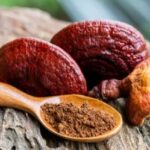In the ever-evolving world of skincare, science continues to unveil innovative methods to rejuvenate and restore the skin from within. One such technique that has surged in popularity among dermatologists and aesthetic experts is platelet rich plasma therapy face treatment. With its roots in regenerative medicine, this therapy has become a go-to option for individuals seeking a natural and minimally invasive approach to facial rejuvenation. As awareness grows, more people are turning to PRP therapy to unlock youthful, glowing skin without surgery or synthetic chemicals.
What Is Platelet-Rich Plasma (PRP) and How Does It Work?
Platelet-rich plasma (PRP) is derived from a small sample of the patient’s own blood. This blood is processed through a centrifuge, which separates red blood cells from plasma. The resulting plasma is rich in platelets — the blood components responsible for healing and regeneration. These platelets contain growth factors that can stimulate collagen production, improve skin texture, and accelerate tissue repair.
When injected into the skin or applied topically in conjunction with micro-needling, PRP stimulates the body’s natural healing response. This boosts cellular regeneration in the facial tissues, ultimately enhancing skin tone, reducing fine lines, and improving overall skin vitality. Because it uses the body’s own biological material, the risk of allergic reaction or adverse effects is extremely low.
Why PRP Therapy Is Gaining Popularity in Skincare
One reason PRP therapy is becoming a preferred skincare option is its ability to deliver natural-looking results. Unlike treatments that involve toxins or artificial fillers, PRP encourages the skin to repair itself. This leads to gradual improvements that preserve the individual’s natural facial expressions and features.
Additionally, the non-surgical nature of PRP therapy appeals to people seeking less invasive cosmetic solutions. It requires little to no downtime, making it an ideal choice for individuals with busy lifestyles. The treatment typically involves a series of sessions spaced a few weeks apart, with noticeable results appearing within weeks after the first session.
Celebrity endorsements and viral videos of the “vampire facial” — a PRP treatment combined with micro-needling — have also helped to bring the therapy into mainstream consciousness. This media exposure, coupled with positive user experiences, continues to drive interest among both women and men looking for safe anti-aging treatments.
Skin Conditions That Can Be Treated With PRP
PRP therapy has shown promise in treating a wide range of skin concerns. For individuals struggling with acne scars, PRP can help regenerate damaged skin and minimize scarring. Its anti-inflammatory properties can also benefit those with rosacea or sensitive skin prone to irritation.
People dealing with uneven skin tone, enlarged pores, or mild sagging can benefit significantly from PRP treatments. It helps restore skin elasticity by boosting collagen and elastin production — two key components of youthful skin. As a result, patients often notice firmer, brighter, and smoother skin after a full course of therapy.
Some dermatologists also combine PRP with other cosmetic treatments such as laser resurfacing, chemical peels, or hyaluronic acid fillers. This customized approach can amplify the results, addressing multiple concerns in a single treatment plan.
What to Expect During and After Treatment
The PRP facial procedure usually begins with a simple blood draw from the patient. The blood is processed on-site to separate the plasma, which is then applied or injected into the face. If used with micro-needling, tiny channels created in the skin allow for deeper penetration of the plasma, enhancing absorption and results.
The treatment is generally well-tolerated. Some patients may experience mild redness, swelling, or tenderness immediately afterward — similar to a light sunburn. These side effects typically resolve within 24 to 48 hours. Most people can return to normal activities the same day, though sun protection and a gentle skincare routine are advised during recovery.
Over the following weeks, as collagen production ramps up, the skin becomes visibly plumper and more radiant. For best results, a series of three to four sessions is often recommended, followed by maintenance treatments every six to twelve months.
Is PRP Therapy Right for You?
While PRP therapy is suitable for most healthy adults, it may not be recommended for individuals with certain medical conditions such as blood disorders, active skin infections, or autoimmune diseases. A consultation with a licensed dermatologist or medical professional is necessary to determine candidacy and create a personalized treatment plan.
It’s also important to have realistic expectations. PRP is not a substitute for surgery or deep wrinkle correction in advanced aging cases. However, for individuals seeking subtle yet meaningful improvements, it can be a transformative experience. When performed by a skilled professional, PRP therapy can provide natural enhancement that revitalizes the face from the inside out.
Final Thoughts
As the demand for natural and effective skincare solutions grows, platelet-rich plasma therapy continues to stand out for its ability to harness the body’s innate healing powers. With minimal risk and no synthetic ingredients, PRP offers a powerful, science-backed option for those looking to improve skin texture, elasticity, and radiance.
Whether you’re combating signs of aging, recovering from acne scars, or simply seeking a refreshed appearance, PRP therapy offers a safe and innovative way to unlock your skin’s full potential — all by using the regenerative power of your own body.




